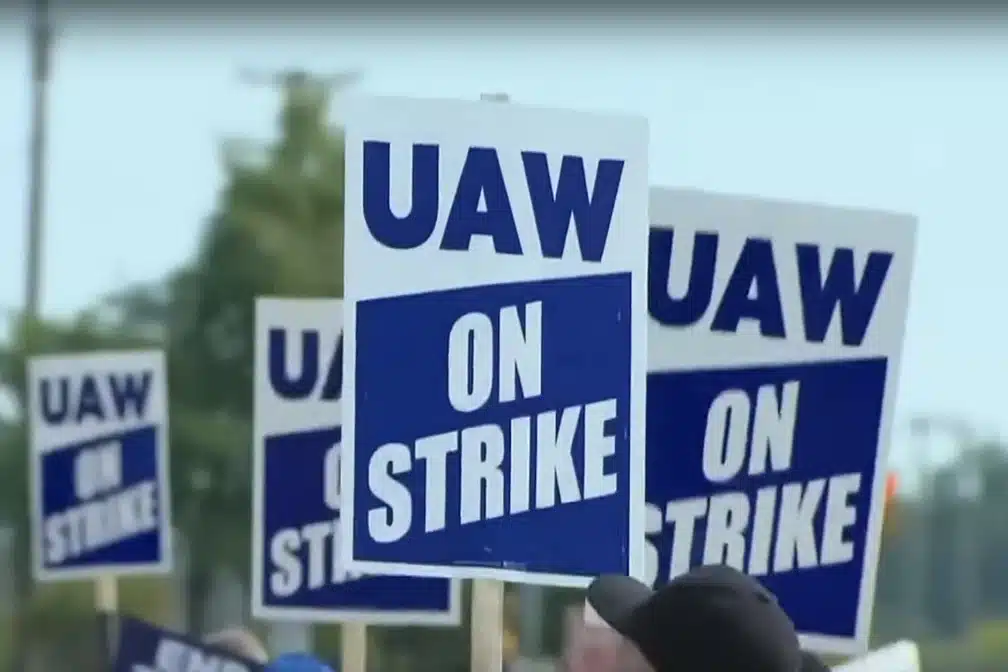Frito-Lay North America (FLNA) has partnered with Schneider National Inc., to address transportation efficiency and reduce the environmental impact of their operations.
More
May 19, 2024 8:24 pm

In recent news, the United Auto Workers (UAW) strike has become a prominent topic of discussion across the nation. The UAW Trucker Strike, which began on September 14, has rapidly expanded to involve 38 General Motors and Stellantis plants in 20 different states. While this news may not seem directly related to the world of commercial truck driving, it carries implications and insights that every truck driver should be aware of. In this article, we’ll delve deeper into the key details of the UAW Strike and how its stipulations may indirectly affect the trucking industry.
The UAW Strike, representing a significant number of auto industry workers, has initiated a strike demanding substantial changes from automakers, particularly General Motors and Stellantis. Let’s take a closer look at their specific stipulations:
Wage Increases: The UAW Trucker Strike is seeking wage increases of 36% over four years. This demand reflects the union’s push for improved compensation for its members, which includes thousands of assembly line workers who play a crucial role in producing vehicles.
Workweek Adjustment: One of the most notable demands of the UAW Strike is the proposal of a 32-hour work week for 40 hours of pay. This bold move challenges the traditional workweek structure and aims to improve work-life balance for employees.
Pension Plans: Another significant demand of the UAW Trucker Strike involves the restoration of traditional pension plans for newer workers. This reflects the union’s commitment to ensuring that workers have secure retirement options.
However, the automakers have countered, citing their need to invest in transitioning from gas-powered vehicles to electric ones. This disagreement has led to a labor dispute that’s been expanding, impacting various plants and communities.
As a truck driver, you can read the trucking industry news-related articles.

Don’t Miss:
Now, you might wonder, how does this affect commercial truck drivers? While truck drivers are not directly involved in the automotive industry, there are indirect effects that could influence their work and livelihoods.
1. Supply Chain Disruptions: One of the most immediate impacts of the UAW Trucker Strike is the potential for disruptions in the supply chain. The UAW Strike has led to some factories experiencing shortages of essential components, which could, in turn, affect the availability of parts needed for truck maintenance and repairs. Truck drivers depend on a well-functioning supply chain to keep their rigs on the road, making any disruptions a cause for concern.
2. Delayed Deliveries: If the UAW Trucker Strike continues and causes extended disruptions in the production of new vehicles, it could eventually lead to delayed deliveries for various goods. This delay could potentially affect truck drivers who rely on consistent schedules and delivery times to meet their clients’ demands.
3. Fuel Prices and Panic Buying: Although not directly related to trucking, the UAW Strike could lead to increased fuel prices if it triggers panic buying. When consumers anticipate potential shortages, they tend to stock up on essentials, which can lead to spikes in fuel prices. Higher fuel costs directly impact truck drivers, as fuel is one of their most significant expenses.
4. Labor Movements’ Impact on Workers’ Conditions: As truck drivers themselves, it’s essential to follow labor movements like the UAW Trucker Strike. These movements often set precedents for labor negotiations across various industries. While the UAW Strike’s demands may seem unrelated to truck driving, their success or failure can have ripple effects on labor negotiations in other sectors, potentially influencing the conditions and compensation for truck drivers in the future.
5. Preparation and Adaptation: In uncertain times like these, adaptability is key for truck drivers. Being aware of potential disruptions and planning for them, such as securing alternative routes or suppliers, can help mitigate the impact of unforeseen events.
The UAW Trucker Strike, with its specific stipulations, holds significant implications for the trucking industry. From potential supply chain disruptions to delayed deliveries and increased fuel prices, truck drivers should remain informed and prepared to navigate the evolving landscape. Additionally, understanding the broader labor movement can provide valuable insights into future negotiations that may directly impact the working conditions and compensation of truck drivers. As the UAW Strike situation continues to develop, staying informed and adaptable will be essential for truck drivers across the nation.
For more information and articles from the trucking industry, follow us on Facebook or subscribe to our Truck Driver News newsletter.
Frito-Lay North America (FLNA) has partnered with Schneider National Inc., to address transportation efficiency and reduce the environmental impact of their operations.
MoreHarnois Energies, a prominent petroleum, propane, and lubricant distributor in Canada, is making a significant stride towards sustainability by becoming the first company in the country to
MoreTrucking Industry Jobs Have Shown Some Steady Growth Over the Last Several Months, While the Warehousing Sector Faces Continued Challenges.
MoreThe American Trucking Associations (ATA) has expressed strong opposition to the Department of Justice's proposed rule of marijuana reclassification.
MoreIn an effort to increase efficiency and sustainability in Trucking, Phillips Industries has launched their new, advanced, stick-on solar panels
MoreThe 2024 CVSA International Roadcheck is scheduled for May 14-16. Over 72 hours, inspectors across the US will conduct nearly
MoreAutomated License Plate Readers are a major advance in law enforcement technology but they raise significant privacy and oversight challenges.
MoreThe EPA's latest emission standards detailed in a final rule issued on March 29 are sparking vigorous debate within the
More